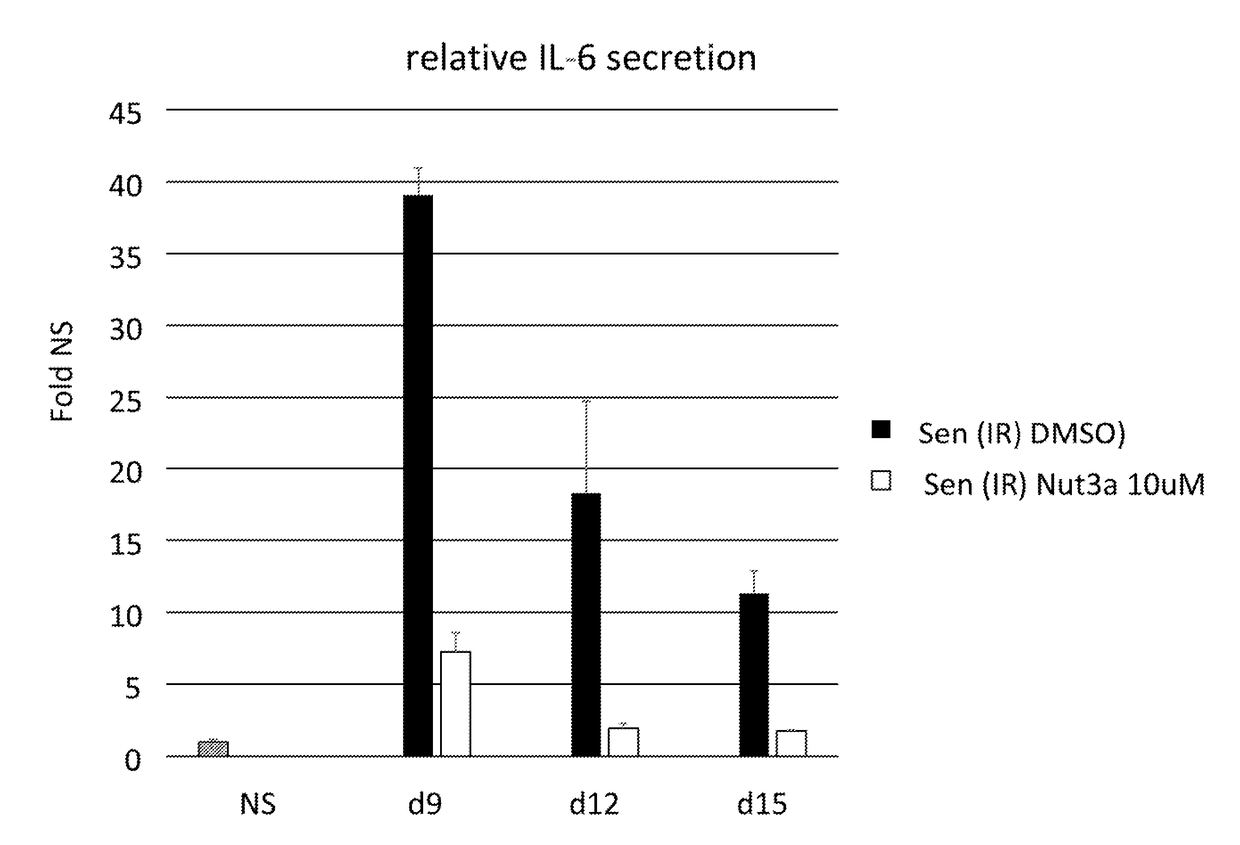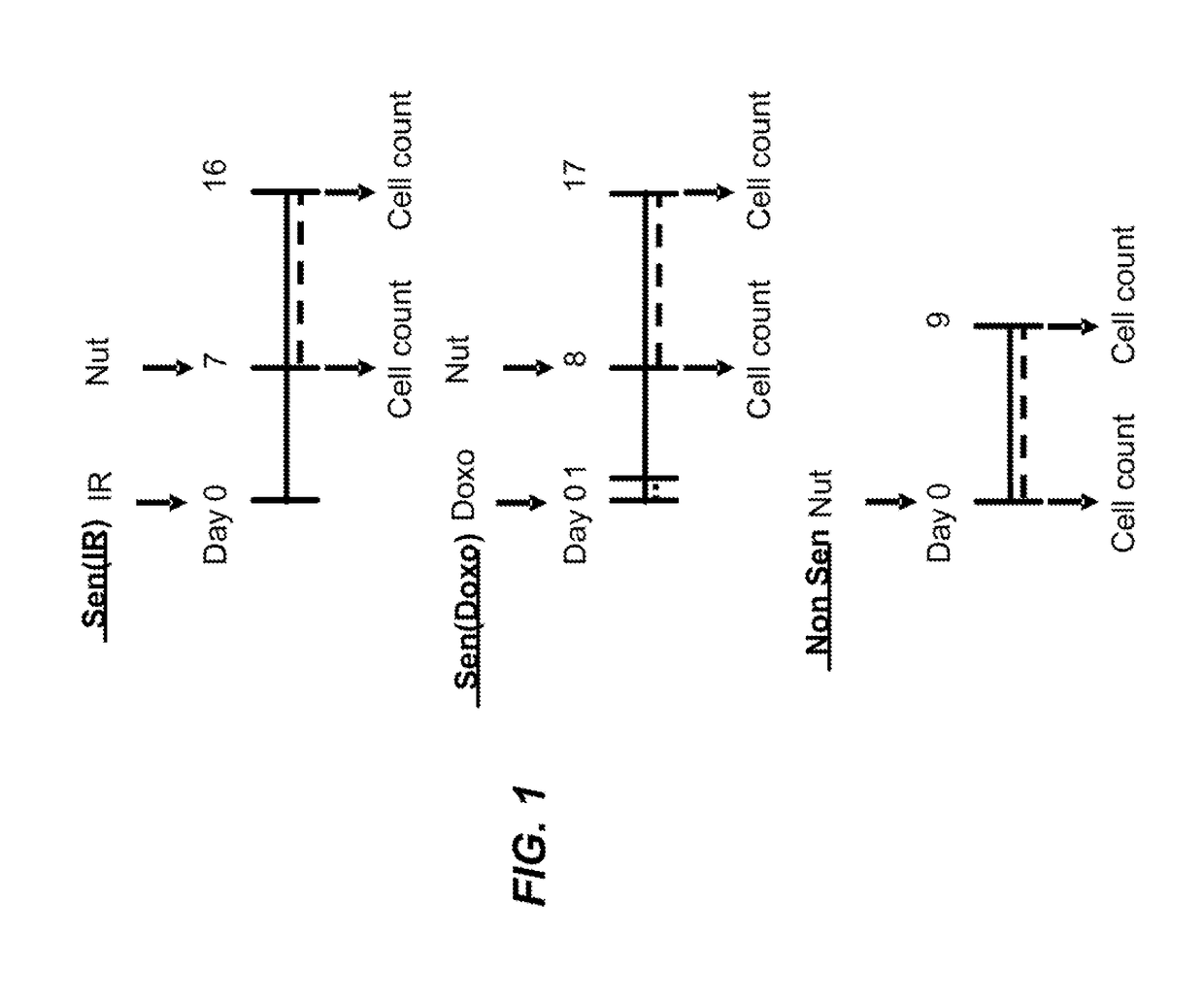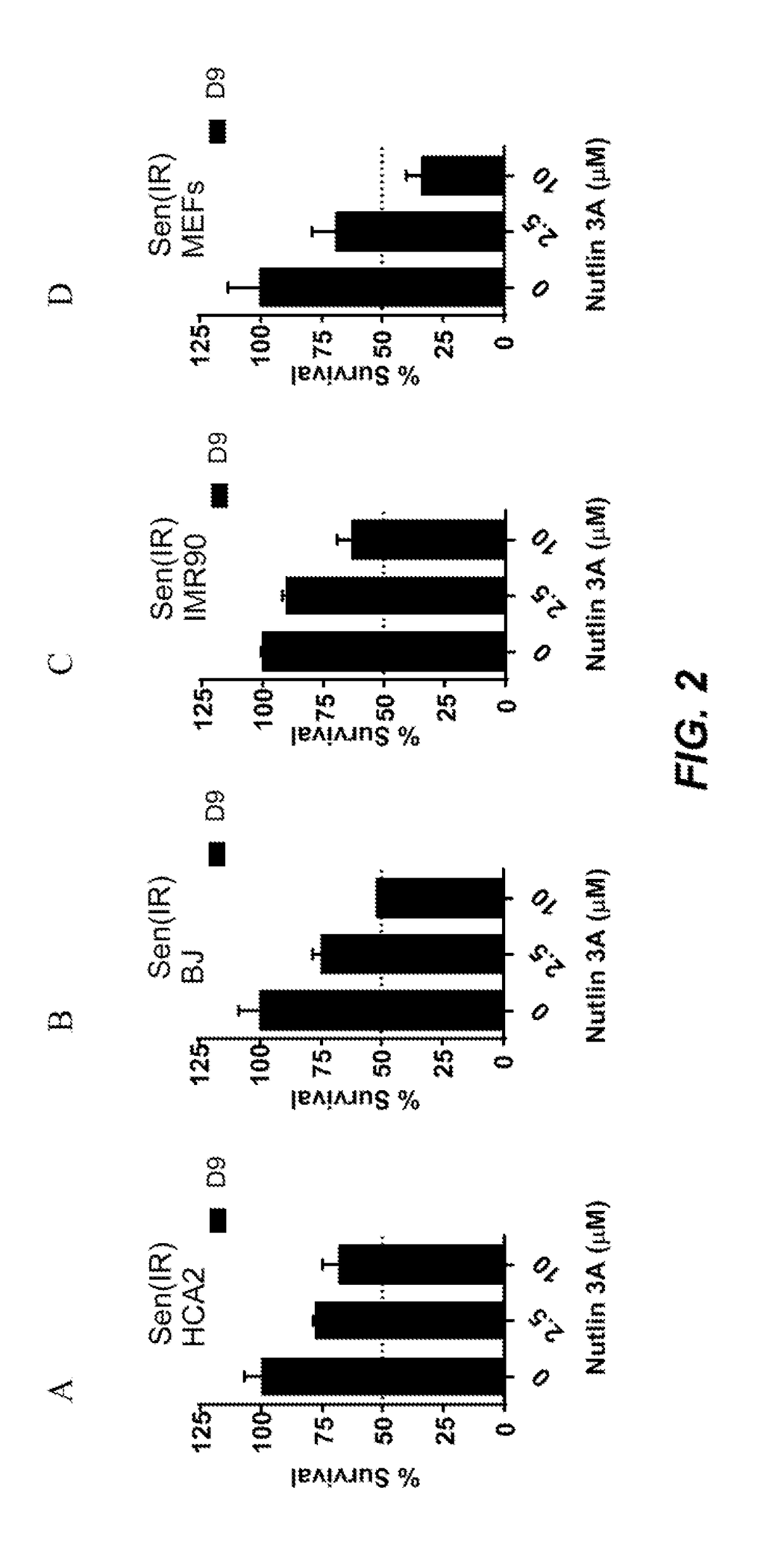Compositions and methods for treating senescence-associated diseases and disorders
a senescence-associated disease and disorder technology, applied in drug compositions, peptide sources, cardiovascular disorders, etc., can solve the problems of compounding subject to increase tumor latency, increase serum creatinine, and reduce glomerular filtration rate , the effect of increasing the serum creatinin
- Summary
- Abstract
- Description
- Claims
- Application Information
AI Technical Summary
Benefits of technology
Problems solved by technology
Method used
Image
Examples
example 1
In Vitro Cell Assays for Determining Senolytic Activity of Nutlin-3a
[0387]Foreskin fibroblast cell lines HCA2 and BJ, lung fibroblast cell line IMR90, and mouse embryonic fibroblasts were seeded in six-well plates and induced to senesce with 10 Gy of ionizing radiation (IR) or a 24 hr treatment with doxorubicin (Doxo). Senescent phenotype was allowed to develop for at least 7 days, at which point a cell count was made to determine the baseline number of cells. Nutlin-3a treatment was then initiated for a period of at least 9 days. Media alone or media with drug as appropriate was refreshed at least every three days. At the end of the assay time period, cells are counted. Each condition was seeded in three plate wells and counted independently. Initial cell count serves as a control to determine the induction of senescence, as compared to the last day count without nutlin treatment. Initial non-senescent cell count serves as a proxy to determine Nutlin-3a toxicity. FIG. 1 shows a sch...
example 2
Nutlin-3A Treatment of p16-3MR Transgenic Mice
[0392]The capability of Nutlin-3a to remove senescent cells in vivo was determined in transgenic p16-3MR mice (see, e.g., International Application Publication No. WO2013 / 090645). A schematic of the experimental protocol is provided in FIG. 6. The transgenic mouse comprises a p16Ink4a promoter operatively linked to a trimodal fusion protein for detecting senescent cells and for selective clearance of senescent cells in these transgenic mice, which is illustrated in FIG. 7. The promoter, p16Ink4a, which is transcriptionally active in senescent cells but not in non-senescent cells (see, e.g., Wang et al., J. Biol. Chem. 276:48655-61 (2001); Baker et al., Nature 479:232-36 (2011)) was engineered into a nucleic acid construct. 3MR (tri-modality reporter) is a fusion protein containing functional domains of a synthetic Renilla luciferase (LUC), monomeric red fluorescence protein (mRFP), and truncated herpes simplex virus (HSV)-1 thymidine kin...
example 3 mdm2
Inhibitor Removes Senescent Cells with Established SASP
[0398]Primary human fibroblast (IMR90) cells were induced to senesce by applying 10Gy of irradiation. Seven days after irradiation (Day 0), cells were treated with 10 μM Nutlin-3a or vehicle (DMSO) for nine days (Day 9). The drug or vehicle was refreshed every three days. Drug / vehicle was removed at Day 9 and the cells were cultured for an additional three days (Day 12). Cells were then fixed with 4% paraformaldehyde and stained by immunofluorescence with a specific anti-IL-6 antibody (R&D, AF-206-NA). Cells were counterstained with DAPI for nuclear visualization. The percent IL-6 positive cells is illustrated in FIG. 12A. An example of IL-6 positive cell immunofluorescence is shown in FIG. 12B. IL-6 positive cells were determined in an unbiased manner using CellProfiler software. Three different cultures were assessed. Non-senescent cells had no detectable cells IL-6 production while senescent cells were about 8% positive at da...
PUM
| Property | Measurement | Unit |
|---|---|---|
| time to | aaaaa | aaaaa |
| time | aaaaa | aaaaa |
| time | aaaaa | aaaaa |
Abstract
Description
Claims
Application Information
 Login to View More
Login to View More - R&D
- Intellectual Property
- Life Sciences
- Materials
- Tech Scout
- Unparalleled Data Quality
- Higher Quality Content
- 60% Fewer Hallucinations
Browse by: Latest US Patents, China's latest patents, Technical Efficacy Thesaurus, Application Domain, Technology Topic, Popular Technical Reports.
© 2025 PatSnap. All rights reserved.Legal|Privacy policy|Modern Slavery Act Transparency Statement|Sitemap|About US| Contact US: help@patsnap.com



